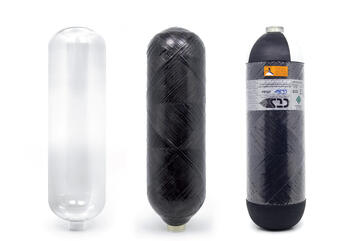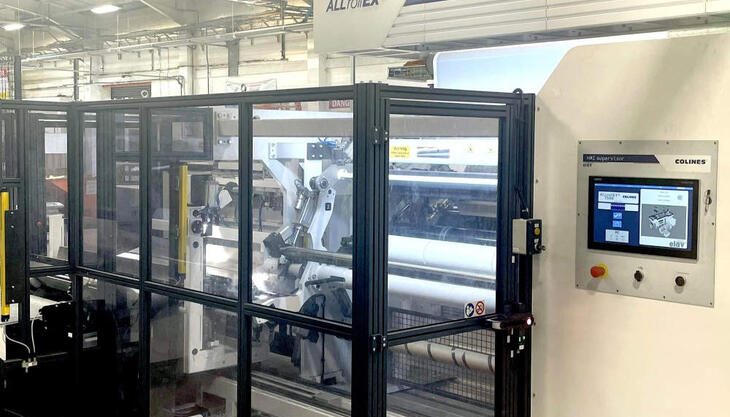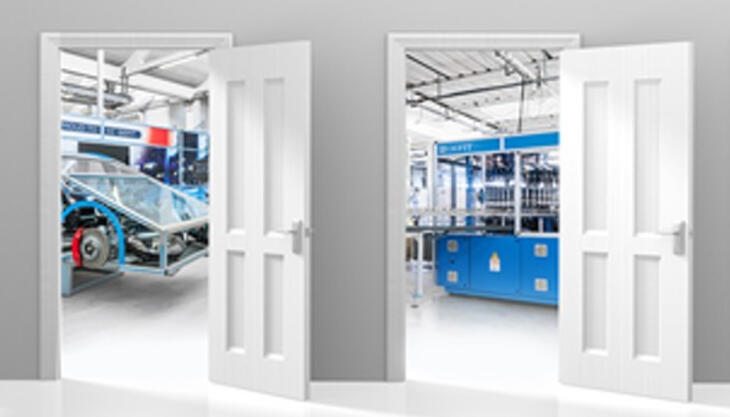PET tanks for compressed gasses

Sipa received a very interesting call recently from a new company, not far from Vittorio Veneto (near Treviso, Italy, where it is headquartered), that was developing an innovative range of ultra-light high-performance compressed gas cylinders. CTS, Composite Technical Systems, based near Udine (Italy), wanted Sipa’s help in the creation of an all-new “type IV” pressure tanks.
Type IV pressure cylinders comprise a plastics liner inside a protective skin made from a continuous carbon fiber reinforced plastics composite. They differ from type I, II and III pressure cylinders, which are either partly or completely made from metal and which weigh a lot more. Type IV pressure cylinders are already on the market, but virtually all of them have a liner blow molded in high density polyethylene. CTS wanted to use PET, which would be lighter and would give the liner a barrier to oxygen up to as much as 100 times higher. Initial target application for the new development is oxygen breathing tanks used by fire fighters, but the potential is much greater, ranging from scuba diving kit, through fuel tanks for cars, to apparatus in outer space.
CTS came to Sipa to help it to perfect a process for making PET liners that it had begun to develop on its own, without achieving the results it was looking for. It had developed its own injection molding machine, as well as a blow molding machine, which together were capable of producing containers with unacceptable tolerances. In fact, dimensions varied between containers by a centimetre or more! No two containers were the same, and machine operators were constantly adjusting the settings.
Sipa’s experts worked with the CTS team to create a PET liner perfectly matched to the application. The two companies worked hand in hand on container development, prototyping, testing, and production.
CTS general manager Giovanni Artusi says he is totally satisfied with the work Sipa has done in helping to create a product ready for the market that offers the very highest levels of safety. Production is now underway on a range of the new pressure cylinders, with volumes ranging from two to nine liters. The smallest one weighs 0.9 kg, and the largest one 4.0 kg - that’s around 30% lighter than a cylinder with an aluminium liner, and five times lighter than an all-steel one. They can all withstand a service pressure of 300 bar, and CTS gives them an unlimited service life.
“The collaboration with CTS has provided us with extra insight into the capabilities of PET as a packaging material. This is the very first time that we have worked on an application where internal pressures are so high. We have all gained a lot from the experience”, says Alberto Uliana from Sipa.
The two companies are now collaborating on experimentation with various types of plastics for the liners that could provide even higher performance in terms of oxygen barrier. Some samples of the innovative packaging will be on display at Pack Expo (Chicago, November), Brau Beviale (Nuernberg, November 11-13), Emballage (Paris, November 17-20).

















